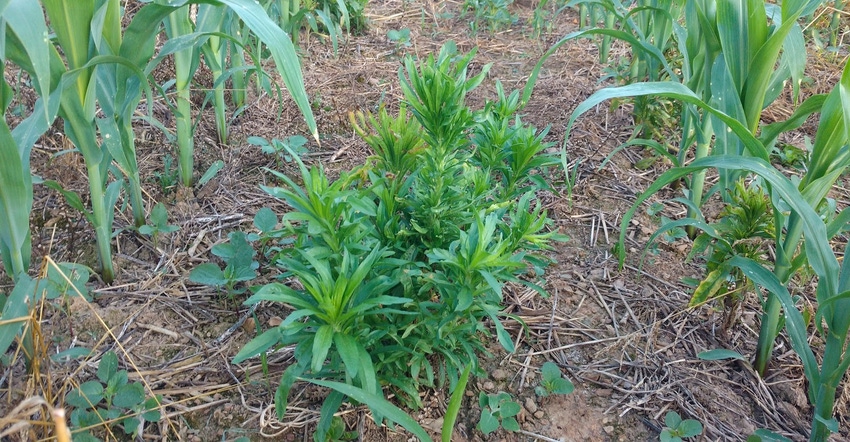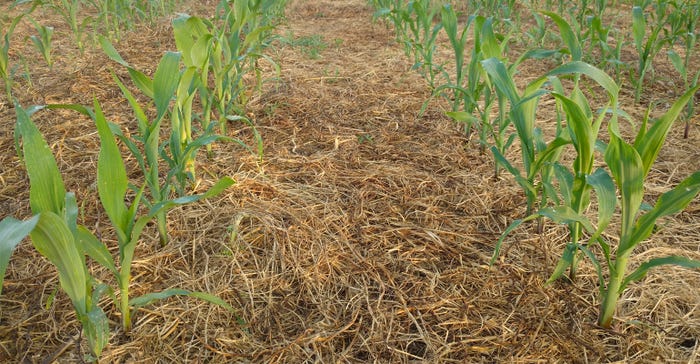June 26, 2017

Twenty years ago, you could tell a Roundup Ready soybean field by how weed-free it was — not a weed in sight! Fast-forward 15 years: Fields infested with marestail weeds were most likely Roundup Ready soybeans.
Today, other chemistries and combinations can fend off herbicide resistance, but the simple glyphosate-only program is rapidly becoming a distant memory. And another better control strategy arrives.
A few years ago, anecdotal evidence began trickling in from farmers representing a widespread area that a cereal rye cover crop, planted before soybeans, greatly reduced, if not eliminated, marestail.
 COVER-CROPPED: No marestail was present where corn was planted into a hairy vetch cover crop.
COVER-CROPPED: No marestail was present where corn was planted into a hairy vetch cover crop.

Mike Plummer, an Illinois crop consultant, has tested for several years the effect of using cereal rye to help manage glyphosate-resistant marestail. He concluded there’s a consistent positive effect, sometimes reducing this weed to zero.
Cover crops achieve weed control chiefly by suppression, competition and shading — by growing faster than weeds. Marestail typically germinates in the fall, but sometimes emerges in early spring. The life cycle of cereal rye is perfectly timed to suppress it in both seasons. Other cover crops can also have a similar shading effect.
More on-the-farm proof
On my own farm, I have an ongoing, long-term, replicated cover crop plot comparing cash crop yields and nutrient efficiency in the context of no cover crop vs. strategic cover cropping. This year, the rotational cash crop is corn. One quart of glyphosate was sprayed on the entire plot after planting.
The effect was clear. Not one marestail was present in the cover-cropped plots. Where no cover crop had been established, marestail was present in all four replications.
The cover crop was a fall-planted mix of hairy vetch, oats, crimson clover and radish. Essentially, any fast-growing and high-biomass cover crop or mix will limit marestail establishment.
What about Palmer amaranth?
This herbicide-resistant pigweed is like a lumbering giant meandering north through the Corn Belt and East. Will cover crops aid in taming this challenge, too?
Palmer amaranth has a different growth cycle, so another approach is required. Currently, the most effective use of cover crops has been experienced in southern regions where corn silage corn is in the rotation.
A fast-growing species like sunn hemp, sorghum sudan, oats or radish planted immediately after corn harvest will outcompete late-season Palmer amaranth and keep it from going to seed. Other areas to the north are finding success by simply growing cover crops before applying their standard herbicide program.
The coach’s closer
With a little strategy, you can add managing herbicide-resistant weeds to cover crops’ list of benefits.
Groff, who farms on the Chesapeake Bay watershed, is a cover crop pioneer and innovator. Check out his website, covercropcoaching.com.
About the Author(s)
You May Also Like




